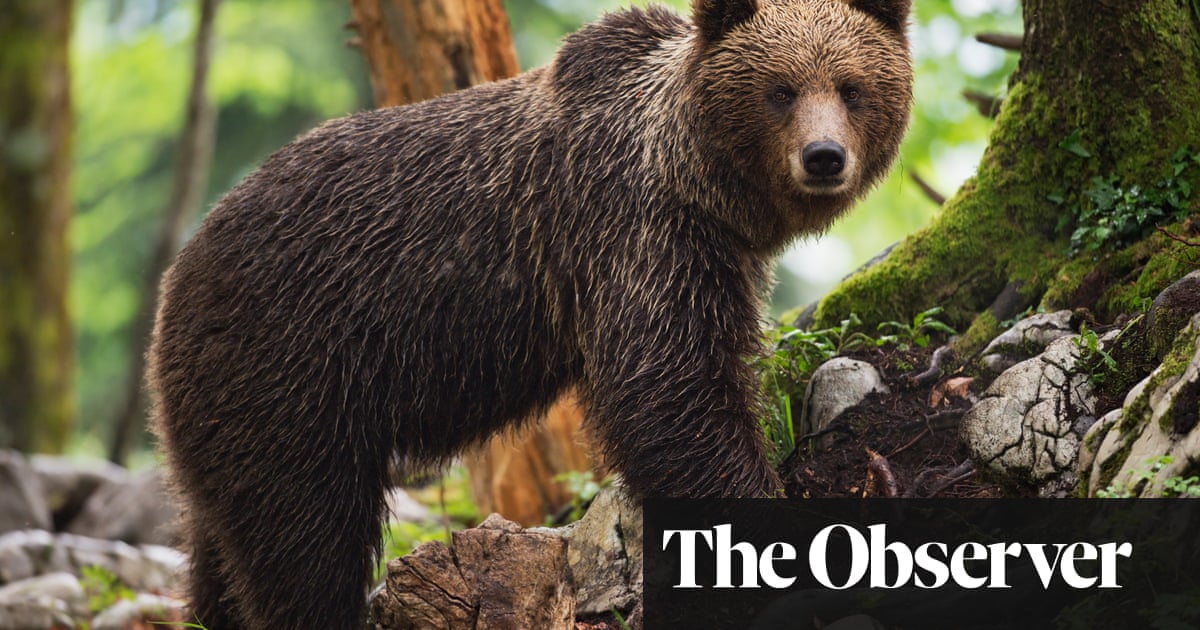Europe’s carnivores have had a remarkworthy alter in fortune. After tens of thousands of years of persecution that wiped out sabretooth tigers, hyenas and cave lions, there has been a recent rebound in the continent’s surviving predators.
Apass mainland Europe, tolerate, wolf, lynx and wolverine numbers have ascfinishn theatricalassociate as conservation meacertains presentd disconnectal decades ago have toleratemament to produce an impact. There are now about 20,500 brown tolerates in Europe, a ascfinish of 17% since 2016, while there are 9,400 Eurasian lynx, a 12% incrrelieve.
The continent now has 1,300 wolverines, an incrrelieve of 16%, while, relabelably, Europe’s population of savage wolves has jumped by 35% to 23,000. Only the gancigo inen jackal has done better. Its population – which is honestd in southern Europe – now stands at 150,000, a ascfinish of 46% since 2016.
Animals that were once hunted as vermin while their habitats were turned to farmland are returning. The howl of the wolf, the grunt of the tolerate and the noise of their pincludeing thcdimiserablemireful forests and plains is being heard aachieve apass Europe.
The century’s most striking continental carnivore comeback is that of the Iberian lynx, or Lynx pardinus. There were confineeder than a hundred of these separateentive feline predators 25 years ago, in their last stronghancigo in in southern Spain. Lynx pardinus, a petiteer, more luminously coloured relative of the Eurasian lynx, was the most finishangered cat on the set upet. Today, its status has alterd from being “criticassociate finishangered” to medepend being “vulnerable” as its numbers have soared.
However, saving the lynx insistd ponderable political action and depictatement that included the introduction of laws in Andalusía to stop indiscriminate snare-laying by landowners; an ardent PR campaign aimed at persuading owners of hunting estates to adore the lynx; and an initial expfinishiture of €33m (£28.5m) to fund conservation. This has since been chaseed up by further depictatement in labor to stand for the lynx to other areas of Spain and Portugal, with the bulk from the EU.
It is a striking, heartening story, although it also elevates a present of contentious publishs that will create the background to this week’s UN biodiversity conference in Rome.
How is Europe going to dwell with its rising population of wolves, tolerates and lynx? How can local people be properly repayd for the injure done by predators that aggression herds of goats or reindeer? And who should pay that compensation? These are key asks – for the return of European carnivores may charm savagelife adorers but it also dangerens to trigger sour battles between conservationists and local people.
Two years ago, hunters stoasty dead 54 wolves in a cull in Sweden, prompting fury from conservationists – and satisfaction among local farmers who pondered the predators a danger to their dwelllihoods. But one group of researchers have asked in the run-up to the Rome biodiversity summit: fair who is a local?
The group, led by Hanna Pettersson of the Leverhulme Centre for Anthropocene Biodiversity at York University, dispute there is a troubleing informage of clarity about who is “local” in Europe and this fall shorture is triggering “the introduction of unfair and ineffective strategies for dealing with carnivores”.
It is a particularly European problem. In other parts of the world, indigenous people are given one-of-a-kind rights and getions. However, Europe only has one indigenous people: the Sami, who dwell in land that strincludeles Sweden, Norway, Finland and Russia.
“For the rest of the continent, the ‘locals’ could include pretty much anyone, making it difficult to comprehfinish with whom to labor to enbig co-existence mechanisms,” Pettersson and colleagues write in their paper which is unveiled this week in the journal People and Nature.
Hotspots for carnivore disruption include the spread of tolerates in the Pyrenees, wolves in Italy and wolverines in Scandinavia. “The vital point is that we will soon be dealing with carnivores in an unpwithdrawnted way,” includeed Pettersson. “In the past, we dwelld with high numbers but it was huged then that you could grasp them at bay with aggression and trouble. Now we cannot do that. You can’t fair go out and shoot a tolerate or wolf or you might be fined or jailed.
“We are going to have to enbig far more pliable strategies that include local people who can guide us to the best policies for dealing with carnivores in particular places if we want to produce certain that their return in Europe is done in a supportable and fair manner.”
A system that increases the injure caemployd by a predator will guide to unessential and contentious culls, while one that underappraises the problem will impose unfair difficultship on local people by blocking the compensation they deserve for injure caemployd by predators. “We insist to discover ways to unite genuine local understandledge with scientific understandledge,” shelp Pettersson. “At the moment we are not doing that.”










